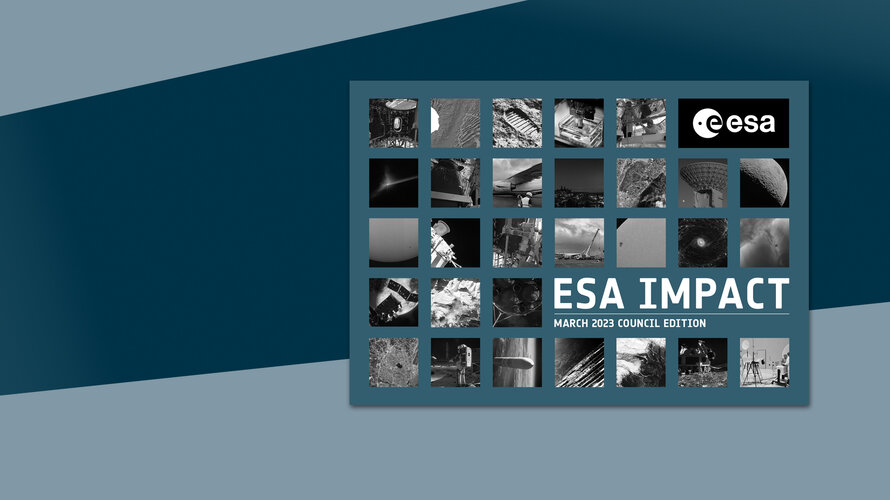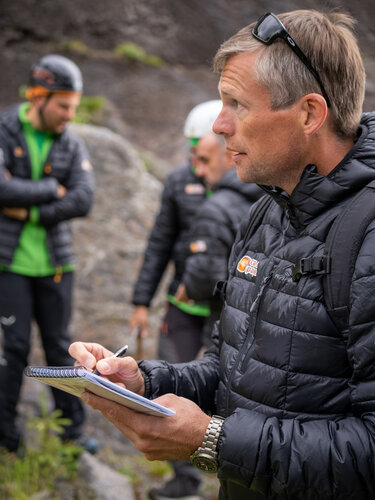South Korea’s Innospace succeeds in test launch
Tuesday, 21 March 2023 12:50
South Korean rocket startup Innospace successfully launched a suborbital rocket from Brazil over the weekend, demonstrating a hybrid motor it plans to scale up into a small orbital launch vehicle.
Japanese lander enters lunar orbit
Tuesday, 21 March 2023 11:48
A lunar lander developed by Japanese company ispace has entered orbit around the moon, setting up a lunar landing attempt by the end of April.
On National Security | Space Force and commercial industry taking relationship to the next level
Tuesday, 21 March 2023 11:00
The U.S. Space Force is exploring the creation of a space equivalent of the civil reserve air fleet, or CRAF, a program the Pentagon conceived 70 years ago to gain access to commercial airlift capacity in an emergency.
ESA Impact – March 2023 Council edition
Tuesday, 21 March 2023 09:30
ESA Impact – March 2023 Council edition
Welcome to the March Council edition of ESA Impact, an interactive showcase of the best images and videos since the last Council meeting
Journey through Jezero
Tuesday, 21 March 2023 09:00 Video:
00:03:03
Video:
00:03:03
Explore the fascinating landing site of NASA’s Perseverance rover in this fly-through video, featuring new views of Jezero crater and its surroundings from ESA’s Mars Express and NASA's Mars Reconnaissance Orbiter.
The video begins by panning around Jezero crater, which can be seen in the centre background surrounded by textured and cratered terrain. The crater moves into the foreground roughly halfway through, when an outflow channel can be seen snaking away from the crater wall and towards the camera perspective. Two inflow channels (Neretva Vallis and Sava Vallis, found on the western-northwestern rim of Jezero) then become visible;
Fossil site is 'Rosetta Stone' for understanding early life
Tuesday, 21 March 2023 08:59 Leading edge technology has uncovered secrets about a world-renowned fossil hoard that could offer vital clues about early life on earth.
Researchers who analysed the 400 million-year-old-cache, found in rural north-east Scotland, say their findings reveal better preservation of the fossils at a molecular level than was previously anticipated.
Fresh scrutiny of the exquisitely preser
Leading edge technology has uncovered secrets about a world-renowned fossil hoard that could offer vital clues about early life on earth.
Researchers who analysed the 400 million-year-old-cache, found in rural north-east Scotland, say their findings reveal better preservation of the fossils at a molecular level than was previously anticipated.
Fresh scrutiny of the exquisitely preser Silvus Technologies unveils Spectrum Dominance
Tuesday, 21 March 2023 08:59 Silvus Technologies has launched Spectrum Dominance, an expansive suite of Low Probability of Intercept/Low Probability of Detection (LPI/LPD) and Anti-Jamming (AJ) capabilities that provide secure and Electronic Warfare (EW) resilient mesh network communications at the tactical edge. Developed in concert with the U.S. Army's C5ISR Center, Silvus' Spectrum Dominance enables StreamCaster MANET ra
Silvus Technologies has launched Spectrum Dominance, an expansive suite of Low Probability of Intercept/Low Probability of Detection (LPI/LPD) and Anti-Jamming (AJ) capabilities that provide secure and Electronic Warfare (EW) resilient mesh network communications at the tactical edge. Developed in concert with the U.S. Army's C5ISR Center, Silvus' Spectrum Dominance enables StreamCaster MANET ra US Space Force Orbital Prime awards Contract to Orbital Assembly
Tuesday, 21 March 2023 08:59 Orbital Assembly has been awarded a $1.7 million contract from the United States Space Force to develop rapidly deployable On Orbit structural technologies to support many types of electronic equipment. The United States Space Force is a separate and distinct branch of the armed services, organized under the Department of the Air Force.
In the Direct to Phase II Small Business Innovation R
Orbital Assembly has been awarded a $1.7 million contract from the United States Space Force to develop rapidly deployable On Orbit structural technologies to support many types of electronic equipment. The United States Space Force is a separate and distinct branch of the armed services, organized under the Department of the Air Force.
In the Direct to Phase II Small Business Innovation R Coherent Logix launches 'HyperX: Midnight', world's most advanced space processor
Tuesday, 21 March 2023 08:59 Coherent Logix, a world leader in high-performance, low power Systems-on-Chips (SoCs) and advanced development tools, has announced the launch of HyperX: Midnight, the company's fourth generation HyperX SoC for the Space 2.0 market.
Coherent Logix has been serving the Space 2.0 and Defense markets for 15 years. In these markets, high-performance computing (HPC) with low power draw and radi
Coherent Logix, a world leader in high-performance, low power Systems-on-Chips (SoCs) and advanced development tools, has announced the launch of HyperX: Midnight, the company's fourth generation HyperX SoC for the Space 2.0 market.
Coherent Logix has been serving the Space 2.0 and Defense markets for 15 years. In these markets, high-performance computing (HPC) with low power draw and radi Beyond Gravity's Lynx computer takes data processing to new level
Tuesday, 21 March 2023 08:59 The Beyond Gravity Lynx computer for satellites is 250 times more powerful than regular onboard computers. The Lynx computer provides capability to process data already in orbit instead of processing it on earth - saving time, energy, and cost.
Satellites produce more and more data. The ability to send large satellite photos down to earth is becoming a critical bottleneck. Beyond Gravity's
The Beyond Gravity Lynx computer for satellites is 250 times more powerful than regular onboard computers. The Lynx computer provides capability to process data already in orbit instead of processing it on earth - saving time, energy, and cost.
Satellites produce more and more data. The ability to send large satellite photos down to earth is becoming a critical bottleneck. Beyond Gravity's NASA uses 30-Year record to track rising seas
Tuesday, 21 March 2023 08:59 Observations from space show that the rate of sea level rise is increasing. Knowing where and how much rise is happening can help coastal planners prepare for future hazards. The average global sea level rose by 0.11 inches (0.27 centimeters) from 2021 to 2022, according to a NASA analysis of satellite data. That's the equivalent of adding water from a million Olympic-size swimming pools to the
Observations from space show that the rate of sea level rise is increasing. Knowing where and how much rise is happening can help coastal planners prepare for future hazards. The average global sea level rose by 0.11 inches (0.27 centimeters) from 2021 to 2022, according to a NASA analysis of satellite data. That's the equivalent of adding water from a million Olympic-size swimming pools to the NASA selects L3Harris to develop imager for NOAA satellite
Tuesday, 21 March 2023 08:59 NASA, on behalf of the National Oceanic and Atmospheric Administration (NOAA), has selected L3Harris Technologies Inc. of Fort Wayne, Indiana, to develop the imager for NOAA's Geostationary Extended Observations (GeoXO) satellite program.
This cost-plus-award-fee contract is valued at approximately $765.5 million. It includes the development of two flight instruments as well as options for
NASA, on behalf of the National Oceanic and Atmospheric Administration (NOAA), has selected L3Harris Technologies Inc. of Fort Wayne, Indiana, to develop the imager for NOAA's Geostationary Extended Observations (GeoXO) satellite program.
This cost-plus-award-fee contract is valued at approximately $765.5 million. It includes the development of two flight instruments as well as options for How heat flow affects the Earth's magnetic field
Tuesday, 21 March 2023 08:59 Compass readings that do not show the direction of true north and interference with the operations of satellites are a few of the problems caused by peculiarities of the Earth's magnetic field.
The magnetic field radiates around the world and far into space, but it is set by processes that happen deep within the Earth's core, where temperatures exceed 5,000-degress C.
New research fr
Compass readings that do not show the direction of true north and interference with the operations of satellites are a few of the problems caused by peculiarities of the Earth's magnetic field.
The magnetic field radiates around the world and far into space, but it is set by processes that happen deep within the Earth's core, where temperatures exceed 5,000-degress C.
New research fr Studying rocks in Norway
Tuesday, 21 March 2023 08:11 Image:
Andreas Mogensen at the PANGAEA course in Lofoten, Norway
Image:
Andreas Mogensen at the PANGAEA course in Lofoten, Norway Cleveland Clinic and IBM unveil first quantum computer dedicated to healthcare research
Tuesday, 21 March 2023 06:34 Today, Cleveland Clinic and IBM jave officially unveiled the first deployment of an onsite private sector IBM-managed quantum computer in the United States. The IBM Quantum System One installed at Cleveland Clinic will be the first quantum computer in the world to be uniquely dedicated to healthcare research with an aim to help Cleveland Clinic accelerate biomedical discoveries.
The unveil
Today, Cleveland Clinic and IBM jave officially unveiled the first deployment of an onsite private sector IBM-managed quantum computer in the United States. The IBM Quantum System One installed at Cleveland Clinic will be the first quantum computer in the world to be uniquely dedicated to healthcare research with an aim to help Cleveland Clinic accelerate biomedical discoveries.
The unveil 
